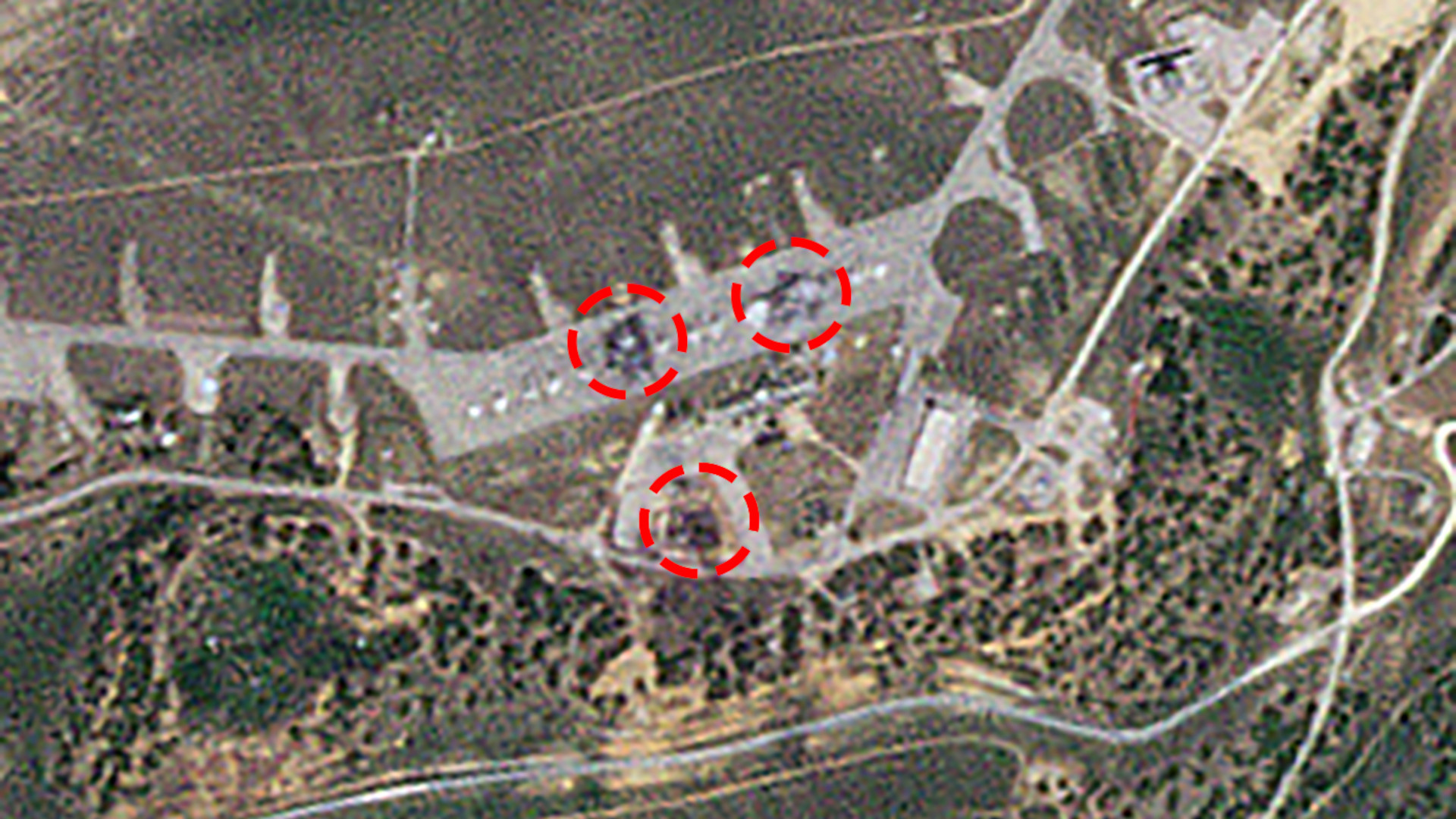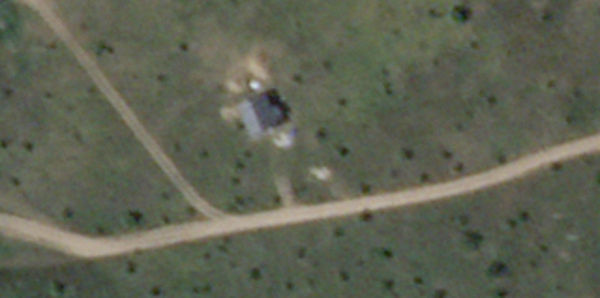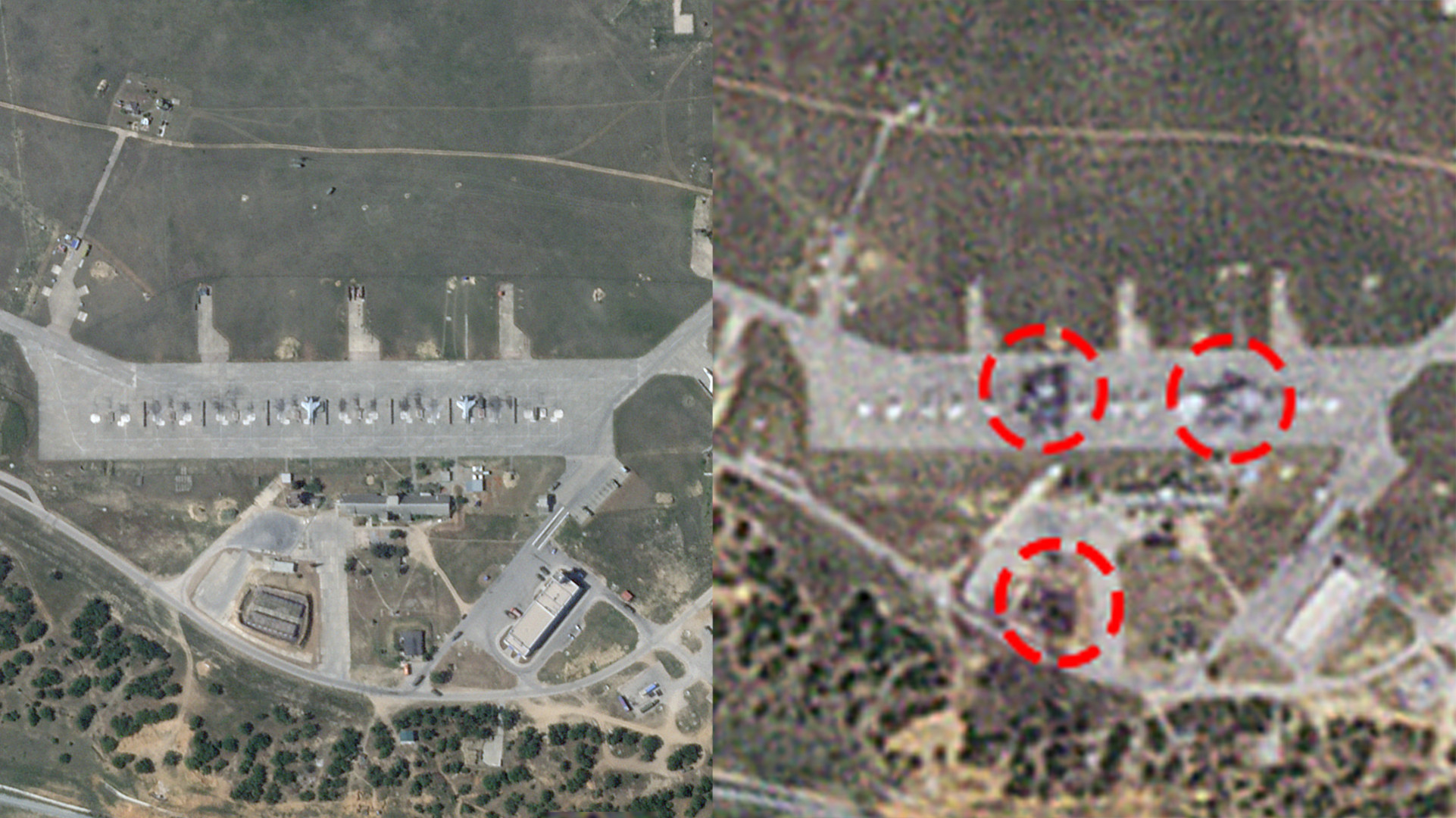Satellite imagery confirms that a portion of the flightline and adjacent areas at Russia’s Belbek Air Base on the occupied Crimean peninsula were damaged in Ukrainian strikes this week. Russian MiG-31 Foxhound interceptors were observed in the same area of the installation just two weeks ago. Other parts of the base sustained damage, as well.
Ukraine’s recent attacks on Belbek, at least one of which occurred on the night of May 14-15, and another of which may have come last night, are already known to have destroyed portions of an S-300 or S-400 air defense system. They look to have involved, at least in part, the use of U.S.-made Army Tactical Missile System (ATACMS) short-range ballistic missiles. You can read more in The War Zone‘s initial reporting here.
A low-resolution satellite image of Belbek taken earlier today that The War Zone obtained from Planet Labs clearly shows at least two large scorched areas on a section of the primary flightline located in the central area of the base. A pair of MiG-31s were seen at the same spots in a previous satellite image of the base shot on May 1st and the Foxhounds are regularly observed parked in this area.

The image also shows another facility directly adjacent to the flightline was hit. This appears to be a fuel or ammo dump of some kind.

The S-300/S-400 that was struck in the attacks, including what looked to be a 92N6 ‘Grave Stone’ radar that was destroyed, does not show up in the low-resolution imagery, which is not surprising. The level of detail offered by this type of image makes only very large changes to the area being examined easy to decipher. The use of cluster munitions can result in damage to equipment that would not even show up on high-resolution satellite images. As such, we need to be cautious as to the interpretation of the low-resolution images.
A separate partial high-resolution image of Belbek from Planet Labs, also taken today, appears to show one revetment where fighter aircraft park has been severely charred or is filled with a burned-out material, such as an aircraft. Su-35S and Su-30SM Flanker fighters and Su-34 Fullback combat jets have been observed at the base in the past, but are also regularly moved around between different revetments and aprons in order to complicate targeting of potential Ukrainian attacks.

There also looks to be a change of some kind visible in the low-resolution image to an area further to the southwest of the apron that was struck. Previous imagery shows a small structure there, but it is unclear what may have happened to it.


It is worth noting that the visibly damaged areas are broadly in line with where publicly available data from NASA’s Fire Information for Resource Management System (FIRMS) had indicated the presence of blazes following the Ukrainian strikes. Pictures and videos said to have been taken by individuals near the base during the strikes earlier this week also showed fires.
After the strikes on Belbek on May 14-15, images emerged showing apparent remains of ATACMS short-range ballistic missiles and unexploded M74 submunitions that some versions of those weapons carry. This reflects the reported delivery earlier this year of longer-range ATACMS versions to Ukraine. Belbek would have been out of reach of the variants of these missiles that Ukraine received initially.
As The War Zone has highlighted repeatedly in the past, ATACMS types with cluster munitions payloads are particularly well suited for targeted aircraft, surface-to-air missile systems, and other important thin-skinned assets out in the open, including at air bases. As such, using those weapons to target the flightline and air defense sites at Belbek makes perfect sense.
Belbek is also a high-priority target since the aircraft and air defenses based there help provide critical screening for the nearby Russian naval base at Sevastopol. Ukrainian forces have also repeatedly targeted Sevastopol and the Russian ships there with long-range strikes and uncrewed surface vessel attacks.
Before the aforementioned ATACMS, there has been a new public surge in U.S. military assistance for the Ukrainian armed forces in recent weeks following the resolution of an impasse in Congress, as well. This all comes amid continuing concerns about Russian gains in Ukraine, including as a byproduct of shortfalls in foreign military aid to Ukraine, especially from the United States.
The targeting the Belbek this week, which we can now see caused damage to at least a part of the flightline and other areas, as well as destroyed portions of a prized air defense system, shows that Ukraine is already working to re-up the pressure on Russian forces in Crimea.
UPDATE: 8:30 PM EST —
The War Zone has now obtained new, higher-resolution imagery of Belbek after this week’s Ukrainian strikes that offer a clearer look at the devastation at the base. You can find those images and our additional analysis here.
Contact the author: joe@twz.com
